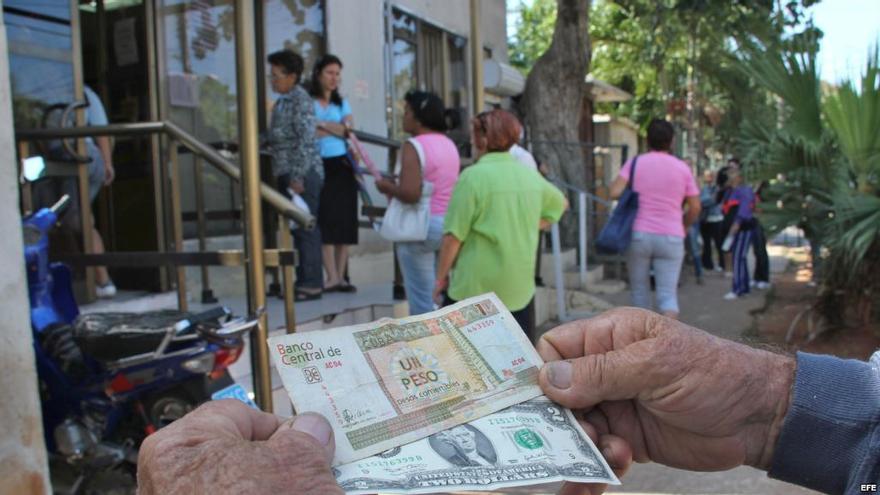
![]() EFE via 14ymedio, 7 March 2018 — The Cuban banking system lacks the necessary infrastructure and technology to provide services to the overseas remittance market, which in 2017 totaled 3.575 billion dollars from the United States alone, according to a report issued on Tuesday by a consultant specializing in the Cuban economy.
EFE via 14ymedio, 7 March 2018 — The Cuban banking system lacks the necessary infrastructure and technology to provide services to the overseas remittance market, which in 2017 totaled 3.575 billion dollars from the United States alone, according to a report issued on Tuesday by a consultant specializing in the Cuban economy.
The Miami-based Havana Consulting Group (THCG) released a report highlighting the “accelerated transformation” experienced by the Cuban remittance market since 2008, which is focused primarily on providing family support as well as footwear and clothing needs.
In fact, in the last eight years, the use of remittances has broadened to cover some of Cubans’ other needs, such as the costs of mobile phones, internet accounts, vacations and business investments.
Today even the purchase of cars, spare parts, mortgage payments, medical insurance and private tutors for college entrance exams are necessities that are paid for with remittances from the US, where more than 90% of them originate.
THCG predicts that remittances from the United States will rise to 5.285 billion dollars in 2025.
However, this economic landscape of family remittances — characterized as one of “transformation, diversification and growth” — is impacted by a banking system that lacks the infrastructure to offer adequate payment services and delivery channels.
“More than half a million private sector Cuban business people generate thousands of financial transactions daily that do not go through Cuban banks because the conditions do not exist to handle them,” writes Emilio Morales, president of THCG, in the company’s extensive report, which sheds light the Cuban consumer market.
Morales adds that a large part of these transactions are handled through “payment networks of remittance agencies and other informal channels.”
A financial activity that, according to the expert, costs Cuban banks tens of millions of dollars in potential profits every year “because they do not have the technological and digitized infrastructure capable of offering these services.”
There is currently no banking transfer system between US financial institutions and Cuban banks, and Cubans have “limited access to tools” that allow them to receive money directly from their bank accounts.
In this context, Cuban banks have a “great opportunity to insert themselves into the remittance payment networks” and to “create formal channels for Cuban entrepreneurs to conduct commercial transactions through banks.”
In addition to the fourteen existing categories, the firm has identified seven new ones for the use of remittances in the next eight years: water, electricity and mortgage payments, cruise vacations, medical insurance, car purchase or rental, and payment of cable or satellite television.
In Morales’ opinion a number of new “modalities” will have “a strong impact on the market and represent a great oportunity for Cuban banking.”
_________________
The 14ymedio team is committed to serious journalism that reflects the reality of deep Cuba. Thank you for joining us on this long road. We invite you to continue supporting us, but this time by becoming a member of 14ymedio. Together we can continue to transform journalism in Cuba.
